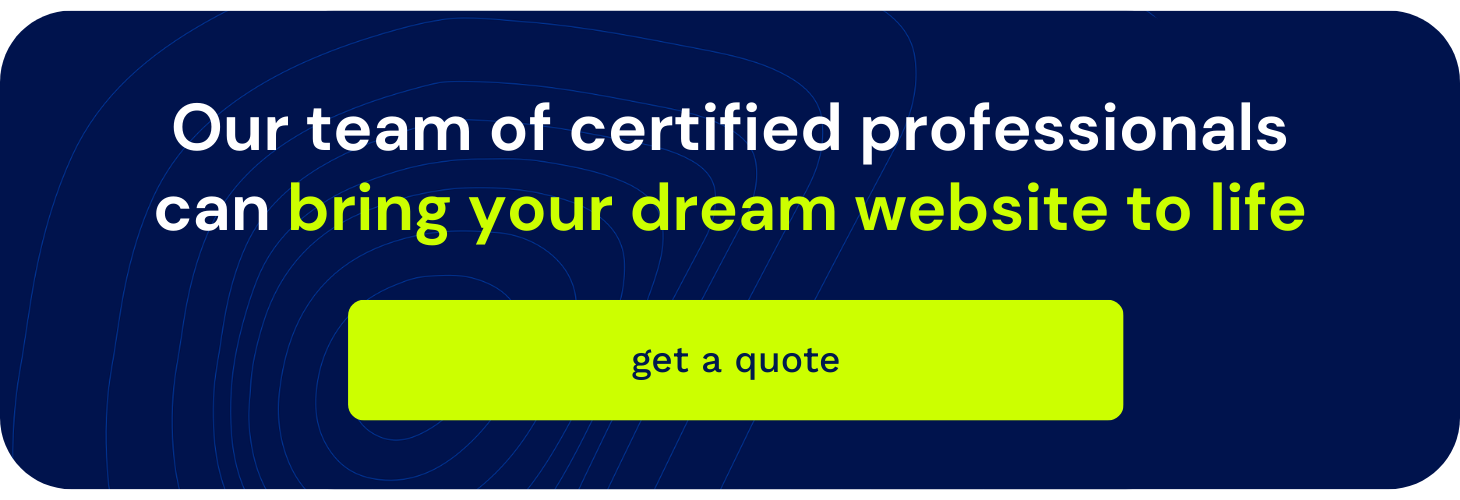Multi-Brand Swim School Franchise Uses HubSpot CMS Enterprise to Scale


Streamline Brands is the leading franchisor of swim schools in the United States. With several individual brands and over 200 schools in their network, Streamline Brands is helping empower small business owners and the communities they serve across the nation.
With several brands under one roof and acquiring new brands all the time, Streamline had a disconnected, inconsistent, and fragmented digital footprint. What they needed was centralization, automation, and consistency for their brands; and they needed someone with expertise that could leverage the full value of HubSpot to support their global efforts.
Parallel Path is a Boulder, Colorado-based digital marketing agency. As mentioned on their website, they have “been crafting and deploying highly-effective marketing solutions for [their] clients since 2006". Streamline was Parallel Path’s client and the team was in need of some HubSpot expertise to help bring their vision to life in the Enterprise CMS. They engaged Revenue River to help architect a solution that achieved all their required functionality, and build it to scale for maximum usability on the HubSpot CMS.
Project Overview
Goal: Develop the architecture and functionality to centrally manage their network locations along with individual schedules and service offerings.
Services Provided: HubSpot Enterprise CMS Development
HubSpot License: CMS Enterprise
Timeline: 90 Days
Rebuilding Brands in HubSpot Enterprise
Streamline had 3 core brands that needed updating: Safe Splash, Swim Labs, and SwimTastic. These sister brands combined for a total of 134 different locations across North America. Some of these sites resided in HubSpot already, and some were needing to be brought into the fold.
We needed to rebuild these sites into a single Enterprise portal, with proper organization and segmentation of all website assets by brand. At the same time, providing easy scalability as new locations (and brands) are added. In addition, we had to craft a solution that made it easy for Streamline’s lean corporate marketing team to support all franchisees and brands. This was put to the test when mid-way through the project, the client onboarded another brand, Saf-T-Swim. Fortunately, our strategy for scalability was sound.
Using HubDB as the Core Strategy
We needed to provide a cohesive user experience per location. This meant creating a type of microsite (or collection of pages) for every location, as well as the main level corporate pages. In addition, we had to deliver tailored, localized content to the user across all locations since classes, staff, and offerings were unique to each franchise.
To achieve this, we created a custom global header and unique navigation menu for each location. This allowed us to present all classes and team information all related to a single location, while providing access to additional locations and corporate level pages seamlessly. If a new person was introduced to Safe Splash through the corporate homepage, they can easily navigate to their nearest location and view a tailored UX of classes, staff, policies, and offerings. They can then jump to another location and see a completely different set of localized content specific to that location. But we needed to manage all this information over an ever-growing list of franchise locations.
The plan was to leverage HubDB tables (or 10!) to dynamically power the content of the pages.
This gave us consistent, centralized management, and allowed for easy updating for all locations across brands. By managing all location information like addresses, phone, social links, team member info, and more through HubDB, the client could manually update specific info, or export/import .csv files for bulk updates easily. Replicating this success with additional data tables for classes, programs/promotions, and careers, we also made it easy for a single team member to update service offerings across all locations and easily update over 2,000 pages dynamically.
Dynamic Content for Brand Personalization
To enhance the UX of the site, we implemented dynamic IP filtering that automatically recommends the closest location, as well as the next 3 nearest by distance. To do this, we leveraged Google Maps API to compare the IP address location against our database, which includes longitude/latitude coordinates for every locale, then returning the information dynamically to specific custom modules we developed throughout the site.
Additionally, we capitalized on 3rd party integrations to further the holistic platform. By directly linking to the membership platform MindBody, we were able to facilitate current member engagement through login CTAs on each header. The client was also using SnapEngage, which was an integrated chat feature on the site and connects to their back-end operations platform. By incorporating these functionalities, we were able to reduce the impact on normal business day-to-day for the individual franchises by allowing them to operate as they were pre-redesign.
The Results
Above and beyond everything else, we were able to deliver real meaningful change to an overburdened team. By creating the efficiencies needed in order to manage everything in one platform, we were able to lift the daily weight that Streamline’s corporate team felt. With the COVID-19 pandemic negatively impacting business and personnel, the efficiencies were able to sustain manageability on an even smaller team. With a firm foundation in place, Streamline Brands was set up for scale and had the system in place to easily add more franchises and brands all on the same HubSpot platform.
Takeaway
Even though HubSpot is a CMS, you have the ability to customize and build anything you can possibly dream up. By leveraging the Enterprise CMS Hub, organizations can easily manage a network of brands and pick up wild efficiencies within their content management as they scale.
We'll manage the successful migration of your corresponding Salesforce CRM data and records into HubSpot CRM.
Step 1: HubSpot Field Mapping: We'll audit your existing SFDC environment to identify all required fields for migration. Then we'll configure HubSpot to match, ensuring the ability to migrate successfully.
Step 2: Data Migration: We'll leverage our custom SFDC <> HubSpot migration tool to migrate all earmarked hard and soft data out of your current platform into HubSpot. Once configured and connected, the product will extract the data and port it into the proper fields while maintaining data associations between objects. The entities we're able to migrate include:
- earmarked contacts, company, and deal records
- notes, meetings, calls, tasks, emails, pipelines, properties, and record owners
- attachments, product objects, and product line items
Step 3: Validation and Testing: We'll review migrated data together, ensuring accuracy. We'll re-run the migration in the event that there are any errors once the migration is approved.
Step 4: Delta migration for net new data: We'll run a final migration to pick up all net new data and move into HubSpot for go-live before marking the project complete.
We'll manage the successful migration of your corresponding Salesforce CRM data and records into HubSpot CRM.
Step 1: HubSpot Field Mapping: We'll audit your existing SFDC environment to identify all required fields for migration. Then we'll configure HubSpot to match, ensuring the ability to migrate successfully.
Step 2: Data Migration: We'll leverage our custom SFDC <> HubSpot migration tool to migrate all earmarked hard and soft data out of your current platform into HubSpot. Once configured and connected, the product will extract the data and port it into the proper fields while maintaining data associations between objects. The entities we're able to migrate include:
- earmarked contacts, company, and deal records
- notes, meetings, calls, tasks, emails, pipelines, properties, and record owners
- attachments, product objects, and product line items
Step 3: Validation and Testing: We'll review migrated data together, ensuring accuracy. We'll re-run the migration in the event that there are any errors once the migration is approved.
Step 4: Delta migration for net new data: We'll run a final migration to pick up all net new data and move into HubSpot for go-live before marking the project complete.

